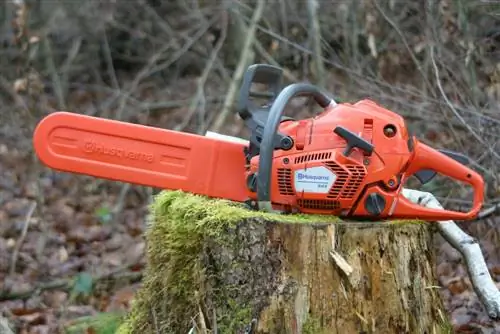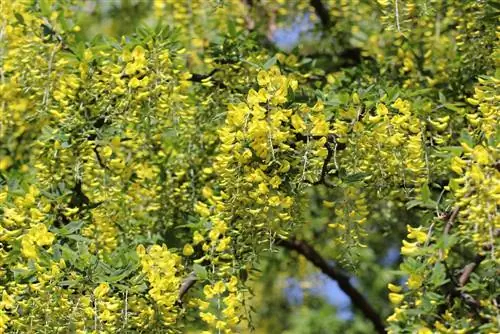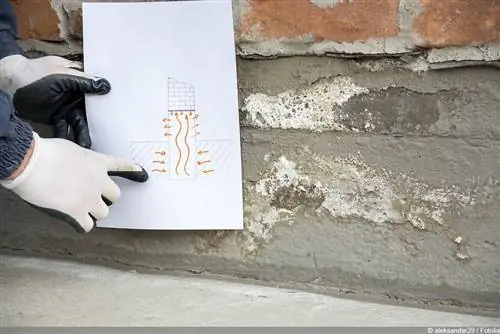- Author admin [email protected].
- Public 2023-12-17 03:39.
- Last modified 2025-01-24 12:45.
The chainsaw or power saw is a highly dangerous tool. Dozens of people seriously injure themselves with it every year. It is not uncommon for deaths to occur. It is best to learn how to use the device safely and properly in a course that ends with an exam and a certificate. Sometimes the resulting chainsaw license can even be required by law.
Legal basis
Basically, nowhere in Germany is there a legal requirement that requires proof of suitability or a course to own or use chainsaws. Anyone can therefore freely buy such a tool and then work with it. However, if you want to cut wood privately in a state forest, the forestry authorities in most federal states often require proof in advance that you have learned how to use chainsaws or chainsaws safely. In order to receive such proof - also known as a chainsaw license or chainsaw driving license - you usually have to complete a course. Of course, the content of the course is not uniformly defined either. Only the general accident prevention regulations need to be informed. In addition, the statutory accident insurance providers stipulate that the course
- four hours of theory
- and eight practical hours.
In addition, a distinction is usually made as to whether the course participants need the knowledge for private logging or whether they are commercially active orwant to be. The latter requires a significantly more extensive course with more content. Both private providers and the forestry authorities regularly offer chainsaw courses. The duration and costs of the course differ from provider to provider.
Contents

Anyone who decides to complete a chainsaw training course should take a close look at what content the provider actually teaches. Even if there are no uniform regulations, the following points should definitely be included:
- Providing accident prevention regulations in accordance with the requirements of the agricultural professional association
- Safety clothing and its importance
- Assembly and handling of chainsaws
- Chainsaw safety features
- Maintenance and care of the saw
- Types and performance classes of operating materials
- Sharpening the chain in theory and practice
- Simple cutting exercises on trees that have already been felled
- Cutting exercises specifically in the forest
- Felling down trees in theory and practice
Safe handling of a chainsaw requires a lot of knowledge and practice. It is therefore advisable to take a close look at the course content and how this content is taught. You should stay away from courses that only offer theory from the outset. In principle, it also makes sense if the course content is spread over two days. In principle it doesn't matter whether you choose a state provider (forestry office) or a private one. As a rule, however, you can rely on government agencies to provide you with sound training. You should definitely stay away from one- or two-hour crash courses that hardware stores or other retailers offer.
Requirements
In principle, anyone can complete a course to obtain a chainsaw driving license. The only requirements for this are usually a minimum age of 18 years and he alth suitability. In other words: People who suffer from epilepsy or another nervous system disorder should avoid using a chainsaw from the start. In addition, individual providers also stipulate that you come to the course with your own safety clothing. This includes at least:
- Head protection (helmet) with integrated eye protection
- Hearing protection
- cut-resistant special trousers and jacket
- Work shoes with steel toes
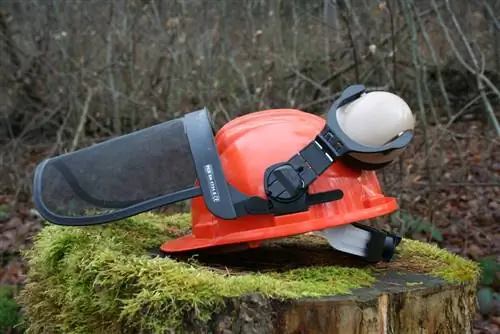
Sometimes you may have to bring your own chainsaw to the course. In order to clarify the requirements specifically, you should speak to the provider before the course begins or when registering. It goes without saying that you can only complete the course in a sober state (no alcohol, no drugs).
Procedure
It is obvious that the process of such a course differs from provider to provider. Basically you will start with the theoretical part. This involves, for example, accident prevention regulations and the theoretical background when felling or chopping up a tree. In addition, knowledge about assessing the quality of trees is often imparted here. The next step will be to look at the structure of a chainsaw, how it works and the built-in safety elements. Only then does the practical part begin, which ranges from starting the saw, through actual handling, to cleaning the device and sharpening the chain. In most cases, every participant will be able to practice this specifically. Finally, there is an excursion into the forest to practice working under the specific conditions on site. Once this is done, it is time for the final exam, which usually consists of a theoretical and a practical part.
Duration
A course to obtain a chainsaw driving license usually takes at least one day. As already suggested, however, it makes sense to spread it over two days. Advantage: The knowledge gained can be absorbed and there is more time for practice. The courses are often offered on Saturdays or weekends, so they are also suitable for working people.
Costs
Of course the costs also differ. They also depend on whether the course lasts one or two days. In general, you can say that you have to expect course fees between 100 and 400 euros. Some forestry offices currently offer the courses free of charge. However, since there is clear criticism of this practice from the responsible state audit offices, this is likely to change soon.
Opportunities
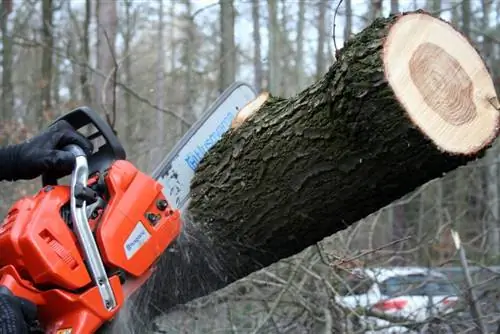
Even if a chainsaw license is not compulsory, it makes sense with regard to your own safety. If you want to cut wood in a state forest as a self-employed person, you can't avoid the document anyway. And the certificate has also been mandatory since 2013 in private forests that are managed according to the PEFC forest certification system.

